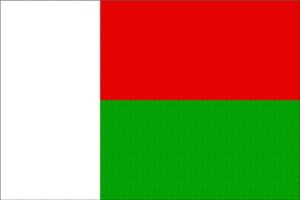Language/Plateau-malagasy/Grammar/How-to-Use-Be
Hi Plateau Malagasy learners! 😊
In this lesson, we will learn how to use the verb "be" in Plateau Malagasy. We will look at the different forms of the verb and how to use them in sentences.
The verb "be" is used to describe a state or condition. It is an important verb in Plateau Malagasy and is used in many different ways. In this lesson, we will look at the different forms of the verb and how to use them in sentences.
The verb "be" has two forms in Plateau Malagasy: "ny" and "tsy". The form "ny" is used to describe a state or condition that is true or exists. The form "tsy" is used to describe a state or condition that is false or does not exist.
Let's look at some examples of how to use the verb "be" in Plateau Malagasy.
- Person 1: Ny mpanjaka izahay. (I am a king.)
- Person 2: Tsy mpanjaka izahay. (I am not a king.)
- Person 1: Ny mahay izahay. (I am happy.)
- Person 2: Tsy mahay izahay. (I am not happy.)
- Person 1: Ny tia izahay. (I am tired.)
- Person 2: Tsy tia izahay. (I am not tired.)
The verb "be" can also be used to describe the location of something. For example:
- Person 1: Ny ao an-trano izy. (He is in the house.)
- Person 2: Tsy ao an-trano izy. (He is not in the house.)
- Person 1: Ny ao amin'ny tany izy. (He is in the countryside.)
- Person 2: Tsy ao amin'ny tany izy. (He is not in the countryside.)
The verb "be" can also be used to describe the possession of something. For example:
- Person 1: Ny mpamokatra izahay. (I have a job.)
- Person 2: Tsy mpamokatra izahay. (I do not have a job.)
- Person 1: Ny mpianatra izahay. (I have a student.)
- Person 2: Tsy mpianatra izahay. (I do not have a student.)
The verb "be" can also be used to describe the age of someone. For example:
- Person 1: Ny telo taona izahay. (I am thirty years old.)
- Person 2: Tsy telo taona izahay. (I am not thirty years old.)
- Person 1: Ny folo taona izahay. (I am forty years old.)
- Person 2: Tsy folo taona izahay. (I am not forty years old.)
The verb "be" can also be used to describe the gender of someone. For example:
- Person 1: Ny lehilahy izahay. (I am a man.)
- Person 2: Tsy lehilahy izahay. (I am not a man.)
- Person 1: Ny vehivavy izahay. (I am a woman.)
- Person 2: Tsy vehivavy izahay. (I am not a woman.)
The verb "be" can also be used to describe the nationality of someone. For example:
- Person 1: Ny malagasy izahay. (I am Malagasy.)
- Person 2: Tsy malagasy izahay. (I am not Malagasy.)
- Person 1: Ny frantsay izahay. (I am French.)
- Person 2: Tsy frantsay izahay. (I am not French.)
The verb "be" can also be used to describe the occupation of someone. For example:
- Person 1: Ny mpanoratra izahay. (I am a writer.)
- Person 2: Tsy mpanoratra izahay. (I am not a writer.)
- Person 1: Ny mpanampy izahay. (I am a teacher.)
- Person 2: Tsy mpanampy izahay. (I am not a teacher.)
To improve your Plateau Malagasy Grammar, you can also use the Polyglot Club website. Find native speakers and ask them any questions!
➡ If you have any questions, please ask them in the comments section below.
➡ Feel free to edit this wiki page if you think it can be improved. 😎

